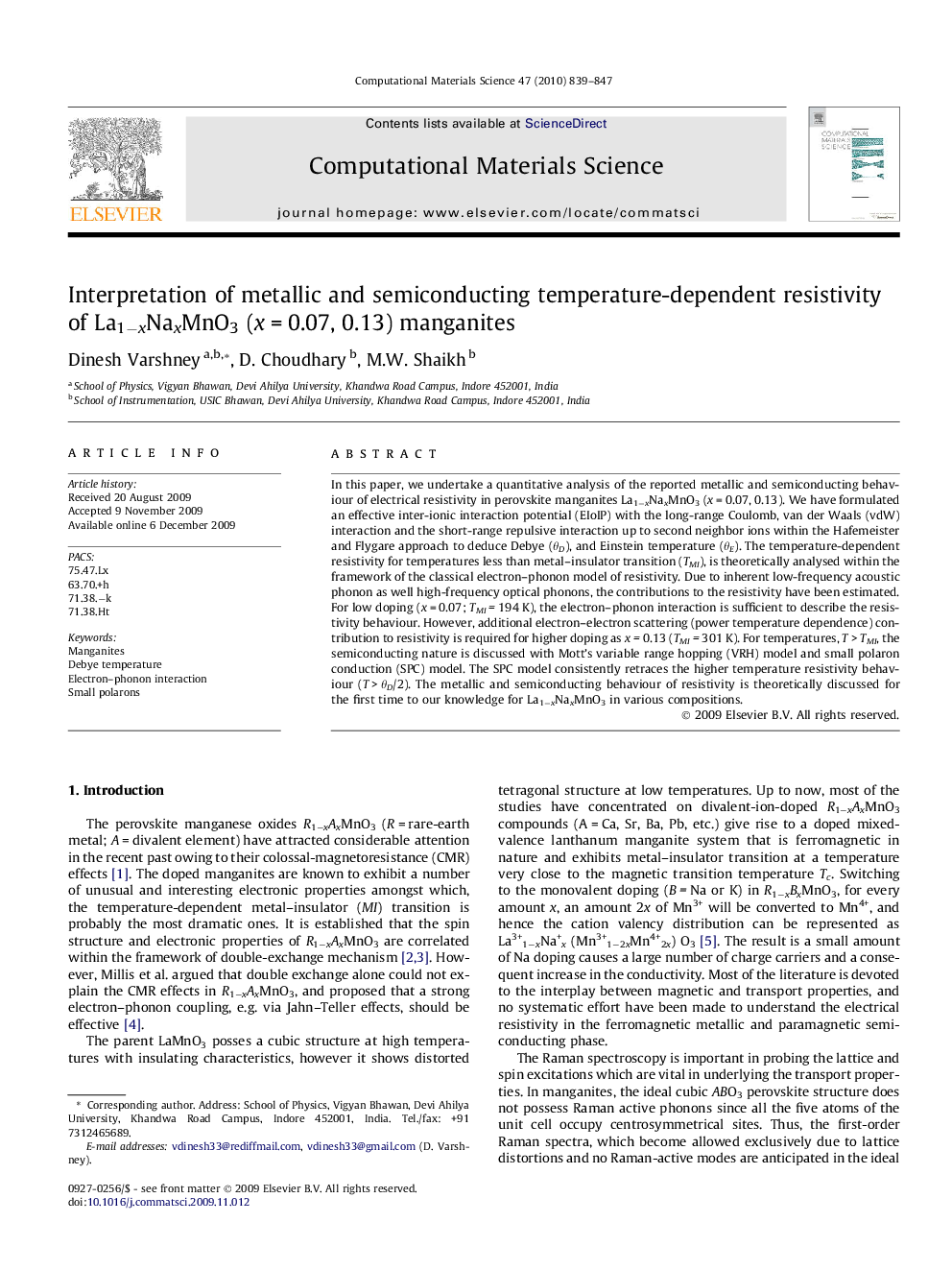| Article ID | Journal | Published Year | Pages | File Type |
|---|---|---|---|---|
| 1563377 | Computational Materials Science | 2010 | 9 Pages |
Abstract
In this paper, we undertake a quantitative analysis of the reported metallic and semiconducting behaviour of electrical resistivity in perovskite manganites La1âxNaxMnO3 (x = 0.07, 0.13). We have formulated an effective inter-ionic interaction potential (EIoIP) with the long-range Coulomb, van der Waals (vdW) interaction and the short-range repulsive interaction up to second neighbor ions within the Hafemeister and Flygare approach to deduce Debye (θD), and Einstein temperature (θE). The temperature-dependent resistivity for temperatures less than metal-insulator transition (TMI), is theoretically analysed within the framework of the classical electron-phonon model of resistivity. Due to inherent low-frequency acoustic phonon as well high-frequency optical phonons, the contributions to the resistivity have been estimated. For low doping (x = 0.07; TMI = 194 K), the electron-phonon interaction is sufficient to describe the resistivity behaviour. However, additional electron-electron scattering (power temperature dependence) contribution to resistivity is required for higher doping as x = 0.13 (TMI = 301 K). For temperatures, T > TMI, the semiconducting nature is discussed with Mott's variable range hopping (VRH) model and small polaron conduction (SPC) model. The SPC model consistently retraces the higher temperature resistivity behaviour (T > θD/2). The metallic and semiconducting behaviour of resistivity is theoretically discussed for the first time to our knowledge for La1âxNaxMnO3 in various compositions.
Keywords
Related Topics
Physical Sciences and Engineering
Engineering
Computational Mechanics
Authors
Dinesh Varshney, D. Choudhary, M.W. Shaikh,
